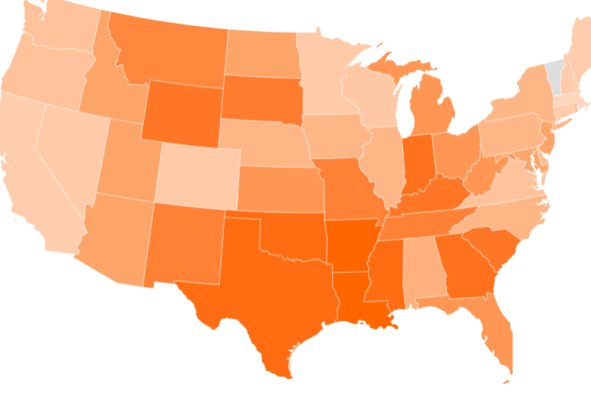Six farmworkers in Colorado have contracted bird flu since the start of July, adding to a growing list of human bird flu cases across the United States. However, these numbers pale in comparison to the outbreaks seen among poultry flocks and dairy herds across the United States.
Highly pathogenic avian influenza (H5N1) is an infectious viral illness that spreads primarily among wild and domestic birds. But the virus that causes bird flu can sometimes jump into animals, including dairy cows and, in some cases, humans.
As of July 17, more than 99,000,000 poultry birds have been affected by the virus in the U.S. since the start of 2022, when the outbreak first begun, according to data from the U.S. Centers of Disease Control and Prevention. 1,165 outbreaks have been reported across 526 counties in 48 states, which can be seen in the map below:
Since mid-March 2024, a "multi-state outbreak" of the virus has also emerged among dairy cattle with 157 herds affected across 13 states, as of July 17. The Food and Drug Administration has also identified genetic traces of the virus in 1 in 5 commercial dairy milk samples tested in the U.S. However, they add that—due to effective pasteurization—the commercial milk supply is safe as these fragments are not actually capable of causing an infection.
The distribution of bird flu among dairy hers is illustrated in the map below:
All 10 recorded human cases since the start of the outbreak have been among farm workers who had direct contact with the infected birds, with the latest burst of cases in Colorado likely a result hot weather making it hard for poultry workers to wear protective equipment.
At this point in time, the CDC says that bird flu still does not pose a significant risk to the general public. All patients have so far seen mild symptoms, including itchy, red eyes, fever, coughing, a sore throat and runny nose. However, the CDC also warns that the virus has the potential to cause "severe disease" in humans and may evolve to become more efficient at spreading between us.
For now, the CDC recommends the following actions to keep yourself safe from bird flu:
- Avoid direct contact with wild birds.
- Report sick or dead birds to your local authority.
- Avoid unprotected direct physical contact or close exposure to cattle.
- Avoid unprotected exposure to animal poop, bedding and unpasteurized raw milk.
- Workers in dairy and poultry industries should wear personal protective equipment while working with animals.
Is there a health problem that's worrying you? Do you have a question about bird flu? Let us know via health@newsweek.com. We can ask experts for advice, and your story could be featured in Newsweek.
Disclaimer: The copyright of this article belongs to the original author. Reposting this article is solely for the purpose of information dissemination and does not constitute any investment advice. If there is any infringement, please contact us immediately. We will make corrections or deletions as necessary. Thank you.



